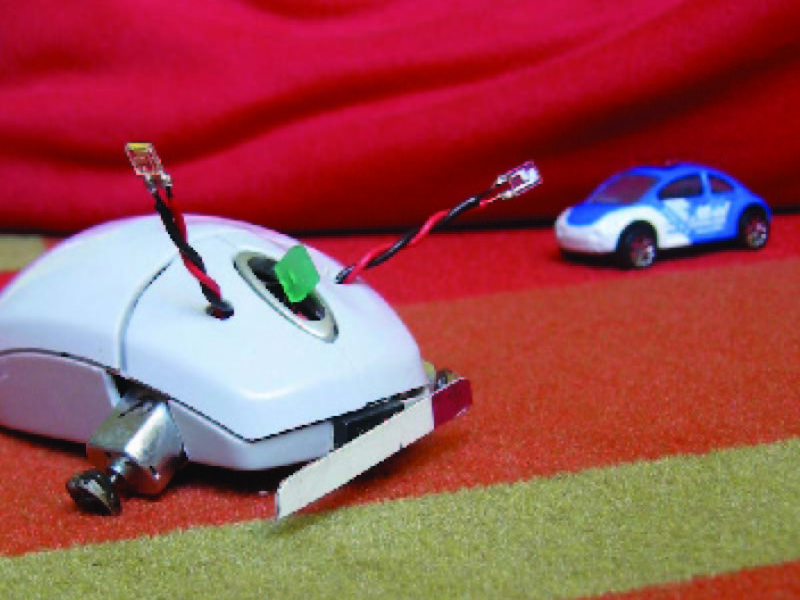This project turns an analog computer mouse into a robot that’ll delight your friends and wow your workmates down on the cube farm. Mousey’s behavior is fittingly mouselike. It scoots very quickly across the floor, thanks to lively little DC motors. And when the critter crashes into anything, it backs away and speeds off in another direction.
The robot’s “brains” use an ingenious hack based on an audio operational amplifier (or “op amp”), an 8-pin chip that’s normally used to drive answering machine speakers and other lo-fi audio equipment. Following the circuit designer Randy Sargent’s original design, Mousey uses this chip to boost two light-sensor inputs to motor-powerable levels. The result is a simple, fast-reacting analog circuit that fits (tightly) inside of a computer mouse case.


